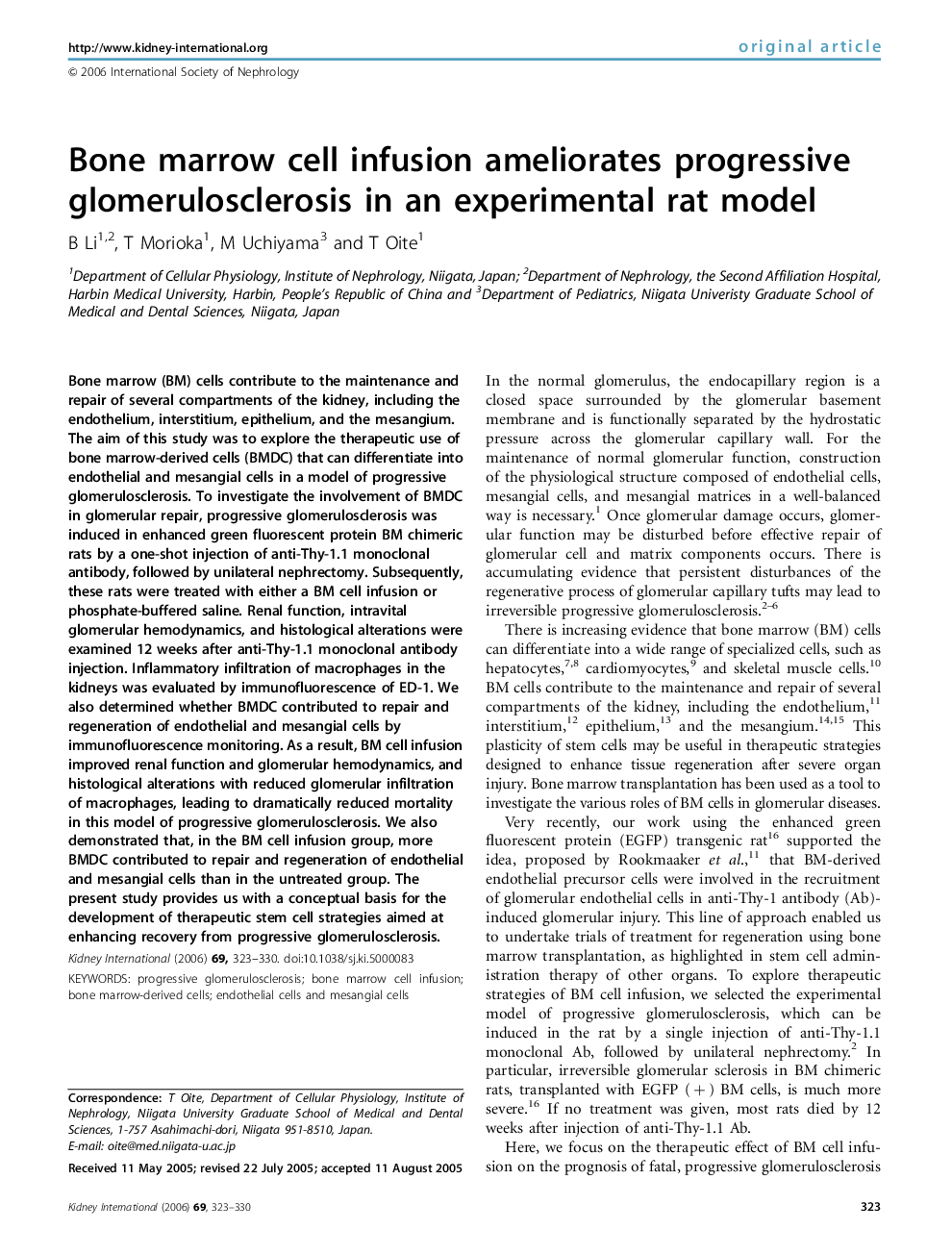| Article ID | Journal | Published Year | Pages | File Type |
|---|---|---|---|---|
| 3885666 | Kidney International | 2006 | 8 Pages |
Bone marrow (BM) cells contribute to the maintenance and repair of several compartments of the kidney, including the endothelium, interstitium, epithelium, and the mesangium. The aim of this study was to explore the therapeutic use of bone marrow-derived cells (BMDC) that can differentiate into endothelial and mesangial cells in a model of progressive glomerulosclerosis. To investigate the involvement of BMDC in glomerular repair, progressive glomerulosclerosis was induced in enhanced green fluorescent protein BM chimeric rats by a one-shot injection of anti-Thy-1.1 monoclonal antibody, followed by unilateral nephrectomy. Subsequently, these rats were treated with either a BM cell infusion or phosphate-buffered saline. Renal function, intravital glomerular hemodynamics, and histological alterations were examined 12 weeks after anti-Thy-1.1 monoclonal antibody injection. Inflammatory infiltration of macrophages in the kidneys was evaluated by immunofluorescence of ED-1. We also determined whether BMDC contributed to repair and regeneration of endothelial and mesangial cells by immunofluorescence monitoring. As a result, BM cell infusion improved renal function and glomerular hemodynamics, and histological alterations with reduced glomerular infiltration of macrophages, leading to dramatically reduced mortality in this model of progressive glomerulosclerosis. We also demonstrated that, in the BM cell infusion group, more BMDC contributed to repair and regeneration of endothelial and mesangial cells than in the untreated group. The present study provides us with a conceptual basis for the development of therapeutic stem cell strategies aimed at enhancing recovery from progressive glomerulosclerosis.
